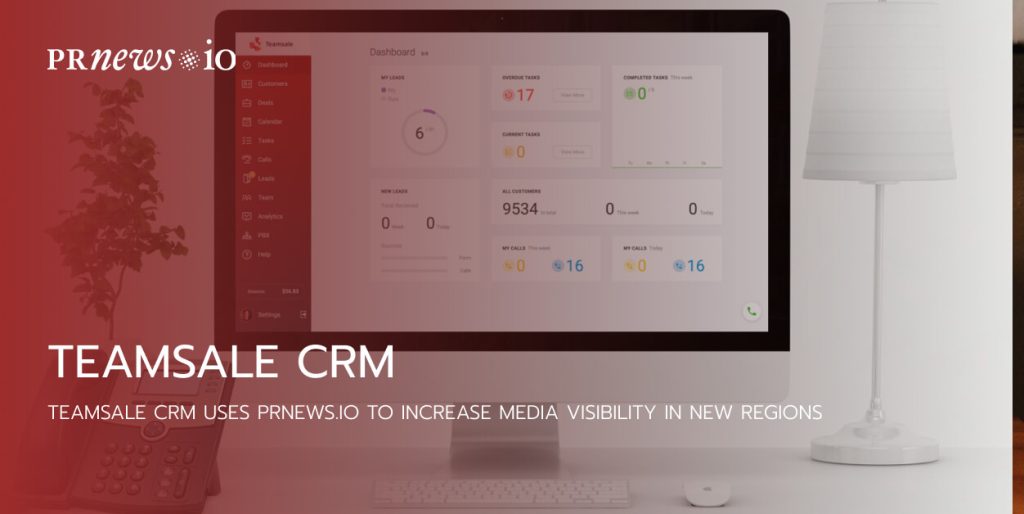If you run a website that sells products or services, you cannot neglect such a vital topic as e-commerce SEO. Unless you make your web store findable, you won’t be able to boost traffic and increase sales. Considering the growing competition in the e-commerce market, it’s getting more difficult for brands to reach the top of SERP, especially if you are taking your first steps with your brand’s promotion. Luckily, if you know e-commerce SEO techniques that work in your industry, you will make your brand more findable by your target audience. This guide highlights the main e-commerce SEO practices every online store can benefit from. Let’s dive in!
SEO for E-commerce Explained
Traditionally, before proceeding with the best e-commerce SEO practices, let’s begin with the definition.
E-commerce SEO is a set of actions and tactics applied in an online store to make it more findable in search engines. When done right, e-commerce SEO can significantly improve your online store’s visibility and help you drive more traffic. In simple words, e-commerce SEO lets you easily optimize your website to drive leads and boost conversions.
However, optimizing an online store for SEO is a complex task that goes beyond working with a content-based project. E-commerce SEO is more than listing keywords and creating content based on them. It involves gaining deeper insights into how search engines work and what businesses they reward, understanding buyer intent, and masterfully implementing specific practices into your website. This complexity underscores the importance of expert guidance, which this guide aims to provide.
Why Does E-commerce SEO Matter?
A quick answer is that e-commerce SEO improves your store’s online discoverability.
If you are looking for a more detailed answer, there are several fundamental reasons your online store should take advantage of masterfully implementing SEO practices.
The major reasons for e-commerce SEO importance include but are not limited to:
- Better UX. An SEO-friendly online store benefits your clients, letting them easily navigate your web store’s inventory while all content loads fast and looks good on mobile and desktop devices. Enhanced user experience consequently leads to increased conversion rates.
- Trust and credibility. The audience perceives an online store that ranks high in search engines as more reliable. This trust and credibility that your brand builds with the audience influences customers’ decision-making, increasing the possibility that people will buy from you.
- Increased organic traffic. With a well-set-up e-commerce SEO strategy, your website will drive free organic traffic. By implementing the right e-commerce SEO practices, you can increase your online store’s visibility in the long term.
- Improved conversion rates. A well-optimized online store converts visitors into paying customers. When it comes to improving your e-commerce website for SEO, every element matters – from the ease of navigation of your content to the ease of the checkout process. All this, taken together, lets you enhance your online store’s conversion rates.
E-commerce SEO Practices You Cannot Neglect
Now that we have clearly defined the meaning and benefits of e-commerce SEO, let’s proceed with this guide’s practical part.
1. Start with Keyword Research
No SEO strategy can go without looking for relevant keywords for your content. It is important to optimize your website and all content with the right keywords that your potential customers will use to find a specific type of product or information in Google and other search engines.
How can you know you’ve chosen the right keywords? Put yourself in your customers’ shoes. What words and phrases will your clients most likely use to find your web store? Besides, do competitor research and check the words and phrases they rank for. Make a list of your keyword choices and balance between search volume and competition. Select keywords with high search volume that are achievable for your web store.
2. Work on the URL Optimization
While working on e-commerce SEO, keep in mind the simplicity and cleanliness of URLs. Using complicated URLs will hardly make your website more findable. Neither end users nor search engines can understand your web store’s content.
- Keeping your URL structure simple and concise can enhance e-commerce SEO and give your customers a better user experience.
- Avoid using complicated parameters that are difficult or impossible to read.
- Remove unnecessary words and numbers.
- Use hyphens rather than underscores to separate words in the URL.
- If your website uses subdirectories, avoid paths that are too long.
3. Optimize Images
E-commerce websites are rich in visual content, so image optimization should be given proper attention. How can you use image optimization to improve your web store’s findability? Work on alt texts. These descriptive snippets provide information about the image’s content, letting users search by images.
When working on the image optimization, add keywords to the alt text yet avoid keyword stuffing. Use one or two relevant keywords in the alt text.
4. Optimize Product Descriptions
Besides quality images, product descriptions play a big role in e-commerce SEO. While working on the text of product descriptions sold on your website, focus on making them user-friendly instead of purely writing for SEO. Achieve a perfect balance between writing descriptions that will be findable in search engines yet fully comprehensive by your customers. Your text should be as descriptive as possible. Do not forget to add keywords that are relevantly used in the copy.
5. Avoid Duplicate Content
To achieve excellence with e-commerce SEO, it’s vital to ensure no duplicate content is present on your website. Search engines favor unique content to put unique content at the top of search results. By featuring duplicated content on your website, you confuse search engines regarding the pages that should rank higher in search results. To avoid confusion, perform regular website audits to detect duplication on your website. Once found, rewrite the copy to make it unique.
6. Optimize Anchor Texts
Anchor text is clickable text with a hyperlink. It is visible to users and provides search engines with the context that describes the linked page. Unsurprisingly, internal and external linking brings significant value to search engines. Such links help Google better understand your website and the things it offers. To provide search engines with the maximum information about your store, avoid using generic phrases like “click here”
7. Remove Broken Links
Broken links are the links that lead to web pages that no longer exist. Ensuring your web store has no broken links is one of the most important e-commerce SEO practices. It helps you not only provide your customers with a better user experience but also lets you improve your online store’s rankings. When search crawlers find broken links on your website, they may interpret it as a lack of quality content and hardly ever rank your project higher in SERP.
8. Keep Your Website’s Design User-Oriented
It is crucial to ensure that your website and product page design enhances the shopping experience. Even with top-quality products at competitive prices, a difficult-to-navigate website or a poor search function can frustrate potential customers, leading them to leave. The design significantly impacts SEO. A high bounce rate, where visitors quickly leave your site, can hurt your rankings. A well-designed site reduces bounce rates and encourages visitors to explore further, even if they don’t immediately find what they seek.
To optimize your e-commerce site, prioritize easy navigation with clear menus and options. Avoid overloading pages with images to ensure fast load times, which is vital as load time also affects rankings.
9. Optimize for Speed
Up to 25% of shoppers may abandon your site if it doesn’t load within 4 to 6 seconds. A fast-loading website boosts customer satisfaction and is crucial for SEO rankings, as search engines prioritize fast, efficient sites.
To improve your site’s speed, consider these strategies:
- Compress images without compromising quality to reduce load times.
- Store frequently accessed resources on the user’s device to minimize repeated downloads.
- Remove unnecessary scripts and plugins to speed up your site.
- Distribute your content across multiple servers to shorten the distance between users and your server.
- Minimize CSS and JavaScript files and enable GZIP compression to reduce file sizes.
10. Display User-Generated Content
Leveraging customer reviews can significantly boost your SEO, improve search rankings, and enhance customer engagement.
Reviews help optimize long-tail keyword rankings. Customers naturally use these specific phrases in their reviews, increasing the likelihood of your page being discovered by potential customers using similar search terms. This improves visibility and builds trust as search engines prioritize customer opinions.
Reviews provide fresh content for search engines. Regularly updated reviews signal website activity and relevance, which search engines value. High-quality, diverse, and frequent reviews enhance your chances of ranking well compared to pages with outdated or fewer reviews.
Most shoppers start their product searches online and rely on search engines for relevant results. Prominently displayed reviews make your site more appealing, increasing click-through rates. Positive reviews build consumer trust and knowledge, leading to longer browsing and reduced bounce rates.
In a Nutshell
E-commerce SEO is an essential part of every successful brand that is easy to find online, drives multiple sales, and delivers unparalleled user experience. As you can see, you can use multiple practices and tools to improve your website’s discoverability. Consider choosing the ones that appeal to your brand the most. Above are the most proven and time-tested e-commerce SEO practices that will be useful for brands of all sizes and related to different niches. Use them as the basis of your e-commerce SEO strategy.
Read more:
- Strategies For A Successful Enterprise SEO
- 5 Strategies For A Successful SaaS SEO
- What Is Pharma SEO – An In-Depth Overview
- Non-Avid Fintech SEO Strategies To Drive Leads
Is your business in need of a PR makeover?
- Benefit from media coverage assistance.
- Witness a refined branding approach.
- Watch as your recognition soars.





